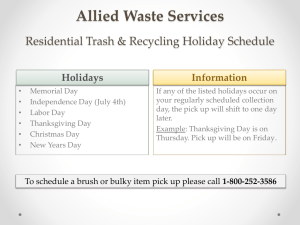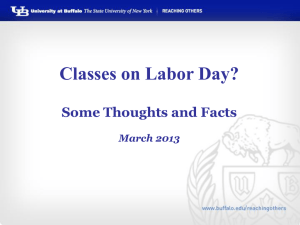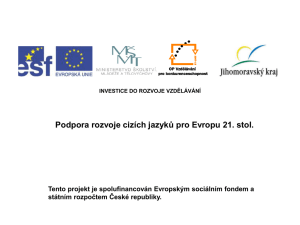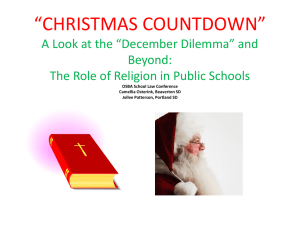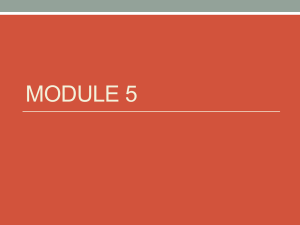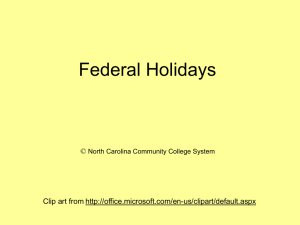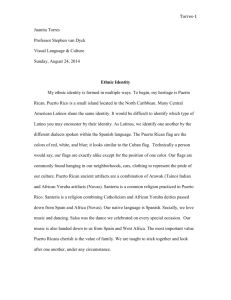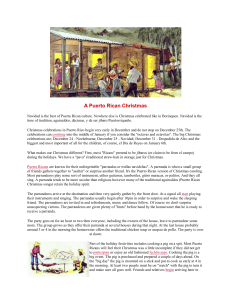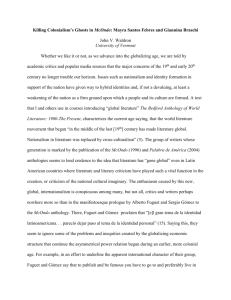Amy Frederick Course: Spanish III Grade Level: Sophomore/Junior
advertisement
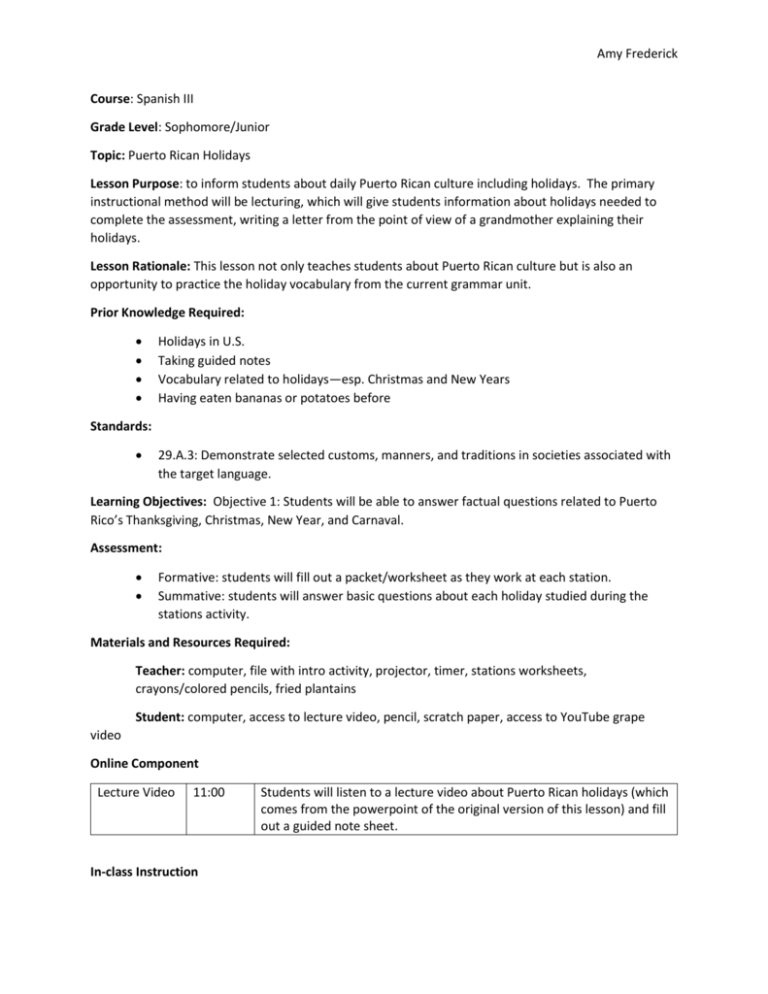
Amy Frederick Course: Spanish III Grade Level: Sophomore/Junior Topic: Puerto Rican Holidays Lesson Purpose: to inform students about daily Puerto Rican culture including holidays. The primary instructional method will be lecturing, which will give students information about holidays needed to complete the assessment, writing a letter from the point of view of a grandmother explaining their holidays. Lesson Rationale: This lesson not only teaches students about Puerto Rican culture but is also an opportunity to practice the holiday vocabulary from the current grammar unit. Prior Knowledge Required: Holidays in U.S. Taking guided notes Vocabulary related to holidays—esp. Christmas and New Years Having eaten bananas or potatoes before Standards: 29.A.3: Demonstrate selected customs, manners, and traditions in societies associated with the target language. Learning Objectives: Objective 1: Students will be able to answer factual questions related to Puerto Rico’s Thanksgiving, Christmas, New Year, and Carnaval. Assessment: Formative: students will fill out a packet/worksheet as they work at each station. Summative: students will answer basic questions about each holiday studied during the stations activity. Materials and Resources Required: Teacher: computer, file with intro activity, projector, timer, stations worksheets, crayons/colored pencils, fried plantains Student: computer, access to lecture video, pencil, scratch paper, access to YouTube grape video Online Component Lecture Video 11:00 In-class Instruction Students will listen to a lecture video about Puerto Rican holidays (which comes from the powerpoint of the original version of this lesson) and fill out a guided note sheet. Amy Frederick Activity/Method Title Bellringer: Review of Online Component Time Allotted 10 min Description/Procedure Explanation of Day 7 min Stations 25 min Exit Slip 8 min Pull up bellringer doc from blackboard before class and put on projector As students enter the classroom, they will pick-up their portfolios from front table to answer the questions on the board (a pre-established practice). Class will have a couple minute warning before going through answers. Once students appear to be done, the class will go through the questions together as the teacher calls on volunteers or random students. The questions will review the material discussed in the powerpoint As the class goes through the correct answers to each question, the teacher will review related information to each question if the class struggles. Students will get into groups by the month of their birthdays (same groups as reading groups from previous day) Teacher will tell each group which part of the room to start in Stations will be set up around classroom to experience each holiday discussed in the video—Christmas, Carnaval, Thanksgiving, New Year Students will rotate every 6 minutes when timer goes off Teacher will pass out a guided worksheet for students to do during the stations activity. It will be collected at the end of class. Students will work in groups following the instructions given at each station. The teacher will set a timer, and when it dings, students will rotate. During the activity, the teacher will walk around the room making sure students are on task and answering any questions. Stations include: Christmas: students will write short letters (2-3 sentences) to the three kings stating what they’d like for Christmas Carnaval: students will color a picture of a carnaval mask Thanksgiving: students will sample fried plantains, a popular Thanksgiving food and read a short paragraph about fried plantains New Year: Students will watch the YouTube video (https://www.youtube.com/watch?v=JzyKKxYFE3w) of the place where the eating of the grapes tradition started in Madrid. Students will take out half a sheet of paper. Students will answer the questions that the teacher reads: Amy Frederick ¿Quién lleva los regalos para la navidad? ¿Cómo se dice mask en español? Describe un plátano. ¿De dónde origine la tradición de comer 12 uvas? Students will write their name on their sheet of paper, hand it to the teacher, and are free to go. Assignment: Students will complete a packet of questions while completing the stations activity. The questions will ensure that the students actually complete the activity. Backup Plans: If the materials for any station get lost, students should further research the holiday on their smartphones or laptops and write down two new facts about the holiday. If there is no internet access, students should use the notes they completed prior to class to discuss each holiday and what they like and dislike about it.
